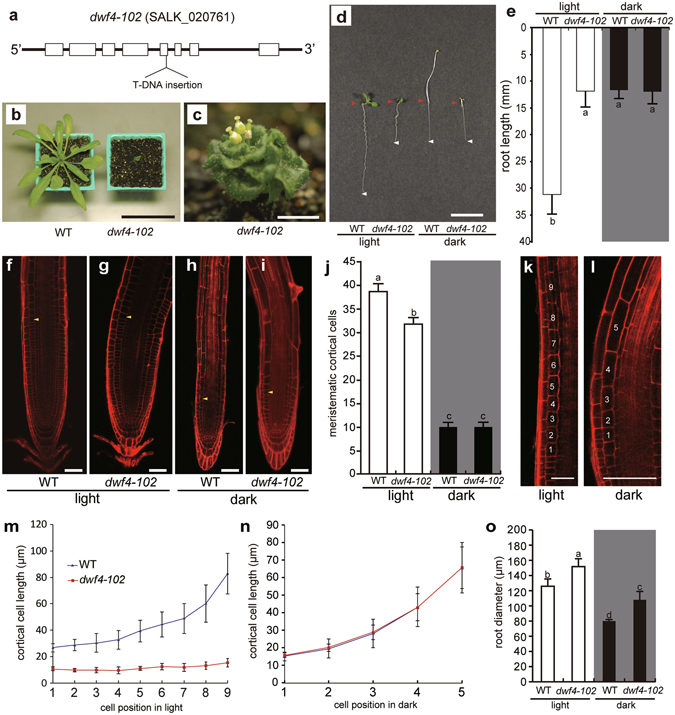Figure 1.

dwf4-102 mutants. (a) The dwf4-102 mutant plants contained a T-DNA insertion in the fifth exon of the DWF4 gene. These plants exhibited dwarfism during the vegetative stage (b) and produced defective flowers during the reproductive stage (c). The roots of dwf4-102 plants were relatively short under light and dark conditions (d,e) [wild-type (WT): n = 48; dwf4-102: n = 16]. Samples were stained with propidium iodine for analyses of the root apexes of WT (f,h) and dwf4-102 mutants (g,i) incubated under light (f,g) or in darkness (h,i). Arrowheads indicate the first cell of the elongation zone. Root diameters were measured in the region corresponding to the first cell of the elongation zone. (j) Cell division activity in the root apical meristems. The cortical cells were counted. There were no differences between WT and dwf4-102 plants incubated in darkness [WT: n = 42; dwf4-102: n = 24]. (k–n) Cell elongation activity in root tips. Under light conditions, cell elongation was observed in WT plants but not in dwf4-102 plants (k,m) [WT: n = 16; dwf4-102 n = 12]. On the other hand, the number of cells in the elongation zone was reduced, and there were no differences between WT and dwf4-102 plants incubated in darkness (l,n) [WT: n = 16; dwf4-102: n = 12]. (o) Root diameter. The roots of dwf4-102 plants were thicker than those of the WT plants under light and dark conditions [WT: n = 40; dwf4-102: n = 15]. Means denoted by the same letter are not significantly different (P < 0.05) according to the Tukey–Kramer method (j,o). Scale bars represent 50 mm (b), 10 mm (c,d), and 50 µm (f–i,k,l). Error bars represent standard deviations.
